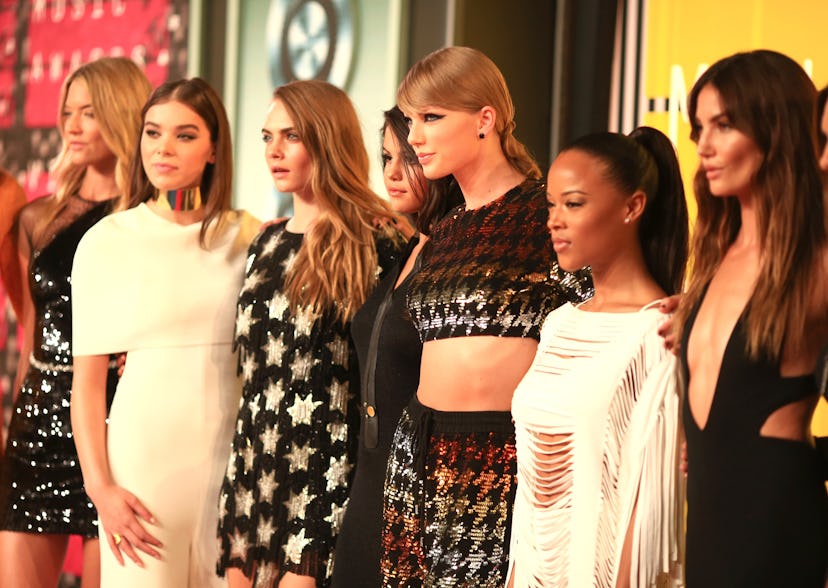Taylor Swift Finally Acknowledges That the Existence of Her Squad Wasn’t as Fun for Us as It Was for Her

When Taylor Swift finally broke her self-imposed silence in late 2017 to re-emerge from pop culture exile with the aptly titled Reputation, she owned up to just about every criticism leveled at her in the preceding months. She addressed claims that she’s manipulative and has a penchant for playing the victim, and, obviously, spent plenty of time dissecting that whole Kimye drama. The one thing she neglected to acknowledge throughout those 15 confessional tracks (though, to be fair, she did make a few vague references in the music video for “Look What You Made Me Do”) was her infamous squad, the gaggle of impossibly thin, overwhelmingly white supermodels and musicians with whom she surrounded herself between 2013 and 2016.
Finally, however, in her new cover story for the April 2019 issue of Elle, a personal essay titled “30 Things I Learned Before Turning 30,” Swift finally gave a vague update on the status of her friendships and, even more significantly, all but issued a formal apology for being so in-your-face about her squad—a practice that, at the time, drew criticism for seeming to be elitist, a misinterpretation of feminism, and a blatant publicity stunt.
In one of her “lessons,” Swift admitted that her childhood experiences with bullying and loneliness may have played a role in how she presented those friendships. “Even as an adult, I still have recurring flashbacks of sitting at lunch tables alone or hiding in a bathroom stall, or trying to make a new friend and being laughed at. In my 20s, I found myself surrounded by girls who wanted to be my friend. So I shouted it from the rooftops, posted pictures, and celebrated my newfound acceptance into a sisterhood, without realizing that other people might still feel the way I did when I felt so alone,” she wrote. “It’s important to address our long-standing issues before we turn into the living embodiment of them.”
In several other parts of the essay, she hinted that, as has been speculated in recent months, many of those friendships have since faded, either due to vague “drama” or to the Great Kimye Feud of 2016. “Something about ‘we’re in our young twenties!’ hurls people together into groups that can feel like your chosen family. And maybe they will be for the rest of your life. Or maybe they’ll just be your comrades for an important phase, but not forever. It’s sad but sometimes when you grow, you outgrow relationships. You may leave behind friendships along the way, but you’ll always keep the memories,” she wrote in one blurb.
“Banish the drama. You only have so much room in your life and so much energy to give to those in it. Be discerning. If someone in your life is hurting you, draining you, or causing you pain in a way that feels unresolvable, blocking their number isn’t cruel. It’s just a simple setting on your phone that will eliminate drama if you so choose to use it,” she added in another.
That doesn’t mean, of course, that Swift is now alone and friendless, with only Joe Alwyn and the memories of the millions of fans who filled stadiums to see her on tour to keep her company. Not only does she thank the friends who “stuck around” in her essay, but she’s also slowly begun to publicize those friendships once again. Blake Lively, Gigi Hadid, and Emma Stone all attended Reputation concerts; Swift hosted an over-the-top New Year’s Eve costume party at her N.Y.C. apartment; and we finally received proof that she and her original supermodel BFF, Karlie Kloss, are indeed still friends. Let’s call it Squad Lite.
Related: How Does Taylor Swift Solve a Problem Like Her Squad?